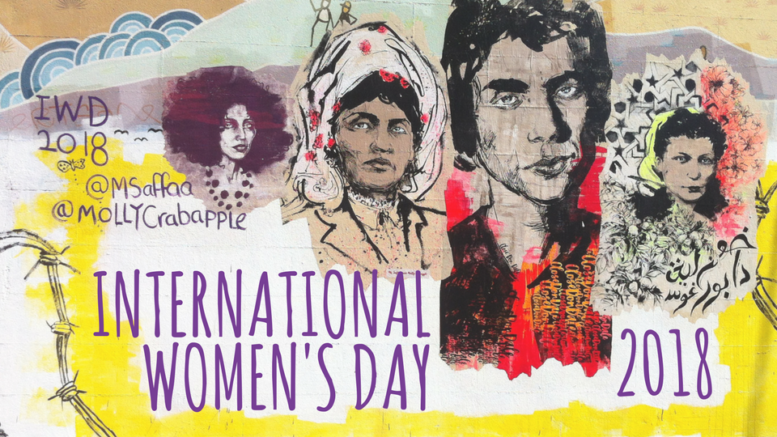Contributed from Victoria
Millions of women around the world went on strike, marched and got involved in a host of activities marking International Women’s Day on 8 March.
Spain experienced the first “feminist” strike, where more than 5 million women walked off the job and crowds surged into the streets, demanding equal pay and conditions and an end to the “macho” culture. In France men in many workplaces downed tools in support of women.
Marches and other activities across Australia were well attended.
The movement for the equality of women has grown to the point that it has become mainstream.
But universal recognition of the inequalities faced by women does not mean that enough is being done to address them in practice. This point has been recognized by the organizers of events. The slogan Press for Change underlined it. The huge number of women that took part, testified that this is a widespread view.
When it comes to the mind and body, empowering women is all about finding ways to lift each other through activities that promote health and wellness. Shape Women Run The World are due to hold a summit that celebrates the accomplishments of women and features diverse speakers and workshops designed to challenge thinking. To learn more, including how to register your interest, go to shapewomenruntheworld.com.
Achievements have been won because they were pushed from below, against the resistance of those in control and benefiting from keeping women down. This is not about men in general, although men have had to go through a steep learning curve, and the learning is not over yet.
The truth is that inequality for women hurts both sexes. It is used as a weapon of divide and rule. A small group of men and women benefit from it. One would be hard-pressed to call Gina Rinehart oppressed. Pauline Hanson is not a friend of women. There is a list of high ranking female politicians, senior officials and corporate executives that are on the other side, although they are female because they participate in and benefit from the exploitation of women.
Sexuality is therefore not the dividing line. It is the dominant social relations that turn every individual into a commodity to be exploited. We see this in the promotion of stereotypes. There are those for women and there are those for men. These stereotypes keep the sexes separate and help to keep real political power and wealth in the hands of a small group.
And what is the role of feminism in this? When it is used to divide, it does not work in the interests of women. When it is used to both empower women and build unity with men, it becomes a powerful force to change society for the better, for women especially, but also for men.
At key topic is violence against women, and it should be. It demands urgent attention. Women have fought hard to have the spotlight on this injustice. Women should not be subjected to violence, pure and simple, and more practical is needed to bring about meaningful change.
Along the way, violence against children must not be forgotten. And a significant number of men suffer violence at the hands of women. It might be fewer. The data suggests about half the rate. But it is a problem that is all too often neglected. All of it must be opposed.
Violence exerted on another human being is all about using power to enforce control over the victim. This needs to be addressed.
Improving the position of women requires the empowering of women, to have the capacity to make choices in all the important aspects of their lives. It is a battle that must be led by women. Men must give their support, and should receive the support of women for their own causes for justice.
It requires men, in general, to learn that by not treating women as equals and giving respect, they are at one and the same time, holding progress for women back and hurting their own real interests.
Many women still need to learn that they are not subordinate to men, that they have a right to achieve their potential, have options in their life choices, be treated as equals at work, in the home and society at large. When women do not identify with the movement for equality they hold themselves and all women back.
Changing attitudes that have been around for a long time cannot be achieved overnight. There is movement though. Bit by bit, more women are seeing the need for change. More men are seeing it as well. There is good reason o be optimistic about the future.
But in the shorter run, there is no getting away from the fact that women’s equality faces significant challenges from neoliberal economics and the associated social policies. Women are most subjected to falling wages, casualisation cuts in services, virtual criminalization at the hands of Centrelink, the risk of homelessness and more intense exploitation. These pressures translate to more tension in the home and contribute to the poisoning of personal relationships.
Big media is highlighting the cracks within the women’s movement and hides the real issues. It works with the vested interests to make the movement harmless, by trivializing it, promotes aspirational goals to join the elite, and neglects the multifaceted reality that is faced by most women.
Women are taking on this challenge too. Achieving equality is not about creating more Gina Rineharts. It is about building as fairer society for all.


Be the first to comment on "International Women’s Day 2018 and building a fairer society"